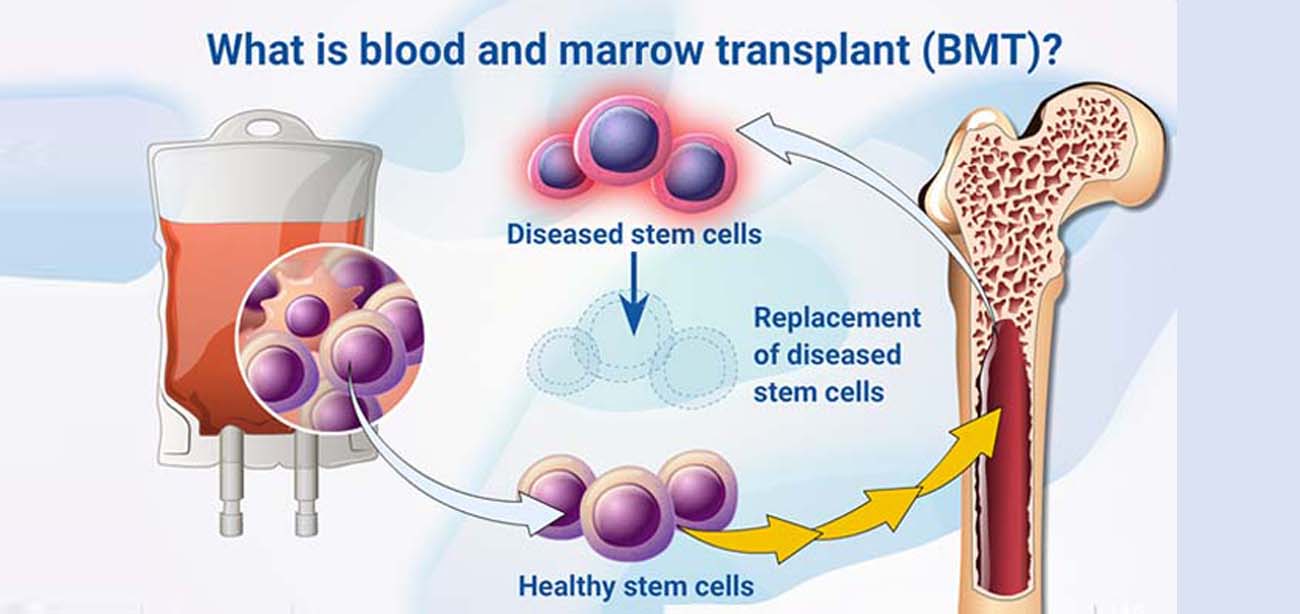Best Doctor for Bone Marrow Transplantion in Mumbai

What is a bone marrow transplant for children?
A bone marrow transplant (BMT) is a treatment for children with certain types of cancer or other diseases. The goal of BMT is to replace a child’s diseased bone marrow with healthy bone marrow.
Bone marrow is the spongy material in the center of the bones that makes all types of blood cells, including young blood cells called stem cells. In BMT, stem cells are filtered, and then put back into the same child. Or they are put into another sick child. These stem cells will grow and become new and healthy bone marrow. Transplanted stem cells are called the graft.
There are different types of BMT depending on how the healthy stem cells are collected:
Types of Bone Marrow Transplants
Autologous bone marrow transplant
Your child is his or her own donor. Stem cells can be collected from your child in 2 different ways:
Peripheral blood stem cells (PBSCs). Stem cells are taken from your child by apheresis. Apheresis is a process of collecting stem cells that float in the blood (peripheral blood stem cells). The cells are then given back to your child after intensive treatment.
Bone marrow harvest.Stem cells are collected from your child by a needle placed into the soft center of the bone. Most sites used for bone marrow harvesting are in the hip bones because they have a larger number of stem cells.
Allogeneic bone marrow transplant
The donor is another person who shares the same or similar genetic type as your child. This is often a brother or sister. Finding a matching donor can be a lengthy process. In some cases, a parent may be a donor. Or the donor may be a matched unrelated donor (MUD) found on a bone marrow registry. Stem cells are taken from the donor either by apheresis or bone marrow harvest.
Umbilical cord blood transplant
Stem cells are taken from an umbilical cord right after a baby’s birth.
These stem cells grow into mature blood cells quicker and more effectively than stem cells from the bone marrow of another child or adult. The stem cells are tested, typed, counted, and frozen until they are needed for a transplant.
What happens during a bone marrow transplant for a child?
Once suitable stem cells are found, your child will get high doses of chemotherapy or radiation (sometimes both) to destroy existing bone marrow. This gives the new bone marrow cells room to grow. This may be called ablative or myeloablative therapy. It stops new blood cells from being made. The bone marrow becomes empty. An empty marrow is needed to make room for the new stem cells to grow and create a new system to make new blood cells.
Next, stem cells are given to your child through an IV in a large vein, often in the chest. This is called a central venous catheter. Getting the stem cells is like having a blood transfusion. The stem cells find their way into the bone marrow. They start growing and making new, healthy blood cells.
During infusion of the bone marrow, your child may have:
Schedule Your Consultation Now
Dr. Shweta Bansal, pediatric hematologist-oncologist in Mumbai, India, offers Bone Marrow Transplantion treatment in children, ensuring childhood cancer care.
Pediatric Hematology
Copyright © Childhood Cancer Care | Dr. Shweta Bansal.